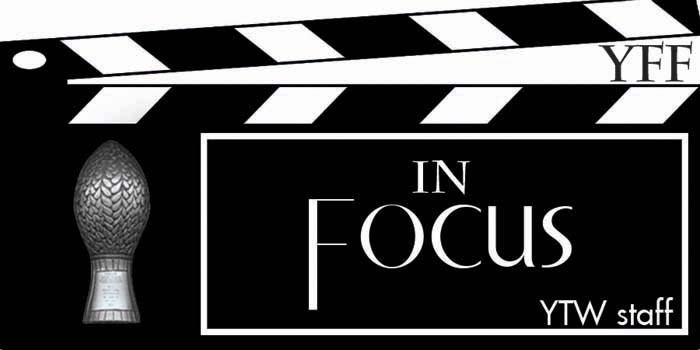In recounting the tale of sealers from the SS Newfoundland, it is important to make a cold film. The story is defined by the cold, the cold is the primary antagonist and the cold is what kills the men. If you cannot capture the cold, you don’t have a film.
54 Hours (dir. Bruce Alcock & Paton Francis) captures the cold by beginning with warmth. A teapot on full boil, in a kitchen decorated in bright yellows, is our introduction to the story. We hear a voice of an interviewer asking an old man if it’s okay to tell the story. Then we hear a much older voice, a male one, start talking, and it pulls us into the much darker, much bleaker tale of the lost men.
The yellow soon disappears, first replaced by black and white archival photos, but eventually animation takes over entirely. The ice on which they are trapped is the defining feature, the men themselves being black silhouettes, mostly defined by the overlay of a snowstorm raging through them. As the elderly voice talks about the men who died and what they went through while waiting for their rescue, the cold begins to take over for the viewer as well. The figures on screen move stiffly, as they should, and the look of the film is as much about the cold as anything that happens within it.
It also carefully avoids being at all romantic, which is always a danger when you’re looking at the end of the era, which the SS Newfoundland represented. The ship was the last of the wooden sealing vessels, which was why it got stuck in the ice in the first place - later steel ships were more durable and better able to make their way through the ice. The ship didn’t have a wireless, technology that could have probably saved lives. The life of a sealer isn’t exactly pushed as a great life either, with the narrator opening by describing them as living like animals. People did it because they had to, not because they wanted to, and the film is careful to avoid depicting the lifestyle as anything resembling positive.
The actual script is a composite, drawing from interviews conducted by Cassie Brown, testimony from the official inquiry and sworn statements from the days following the actual events. If there’s one flaw in the film, it’s that in these opening moments, the actors sound like actors, making the interview format seem a bit contrived at the outset. That concern melts away as the film draws you into its frozen landscape.
Animation has long been associated with children’s entertainment, but this is an example why that’s a limiting viewpoint. Animation, at its best, is a way to create a world that has no equivalent in reality. This film aims to recreate not the literal reality of being trapped on the ice, but the feel of it, making a dark and desolate landscape where even your fellow humans are made of ice and snow. It’s a success, and a deserving recipient of the 2015 Founder’s Award, because it achieves its goal.
This is a cold movie, not as cold as being on the ice for 54 hours, but as cold as one might want to be for 13 minutes.




